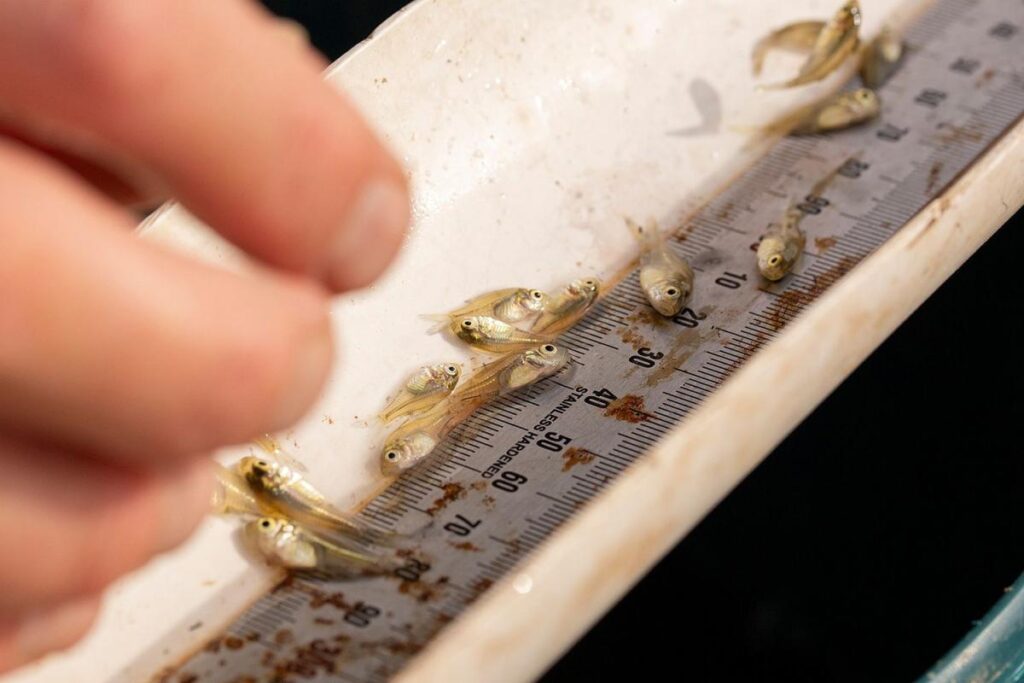A fish previously declared extinct has been released back into the wild in Australia.
The olive perchlet, a small oval-shaped fish with large eyes, was considered extinct in Victoria, Australia, in the 1980s after being last spotted in nature in 1929, according to the Australian Broadcasting Corporation. Now, the species is getting another shot at life and is “back from the brink.”
Shenandoah Bruce with the North Central Catchment Management Authority told the Australian news outlet that the agency released “200 olive perchlet into Cameron’s Creek in the Gunbower National Park.”
The release occurred in January and reportedly marks the first time the fish has been reintroduced in the area since being labeled extinct.
According to the Australian Broadcasting Corporation, the olive perchlet plays a crucial role in the ecosystem, particularly in maintaining a healthy food system.
The 200 fish were bred in captivity with help from the Victorian Fisheries Authority.
Getty
Murray River in South Australia
Sam Fawke, senior technical officer for the Victorian Fisheries Authority, explained the importance of the fish species: “If we see these species across the board disappear, a lot are them are these small-bodied species, then we’re going to see a major effect for the rest of those food webs.”
The fish frequent wetlands and river systems and are known to eat tiny aquatic pests. They are also a food source for birds.
A Feb. 24 social media post from the North Central Catchment Management Authority shared that their recent survey of the olive perchlet released at a different location in Australia in October revealed “incredible results.”
“From just 100 Olive Perchlet released last October, we discovered a whopping 855 individuals thriving, ranging from 14 mm to 49 mm,” wrote the agency.
The New South Wales Department of Primary Industries states that the olive perchlet can grow to about 70 to 88 millimeters with an average size of about 2 inches.
The fish thrive in rivers, creeks, ponds, and swamps with slow or still waters and are often found on vegetation, logs, and dead branches.
The government agency states that the olive perchlet went extinct in the wild due to predation by other fish species, habitat degradation, and fluctuation in water levels.
Last month, researchers rediscovered another fish species in India after 85 years. The journal Zootaxa announced that a Chel snakehead, also known as Channa amphibious, was rediscovered after it was presumed to be extinct.
The freshwater species was absent for over eight decades, with the last recorded specimens collected between 1918 and 1933 in the Himalayan region of India. But in 2024, three specimens were collected on the banks of the Chel River in the town of Kalimpong in West Bengal.
Read the original article on People
Read the full article here


